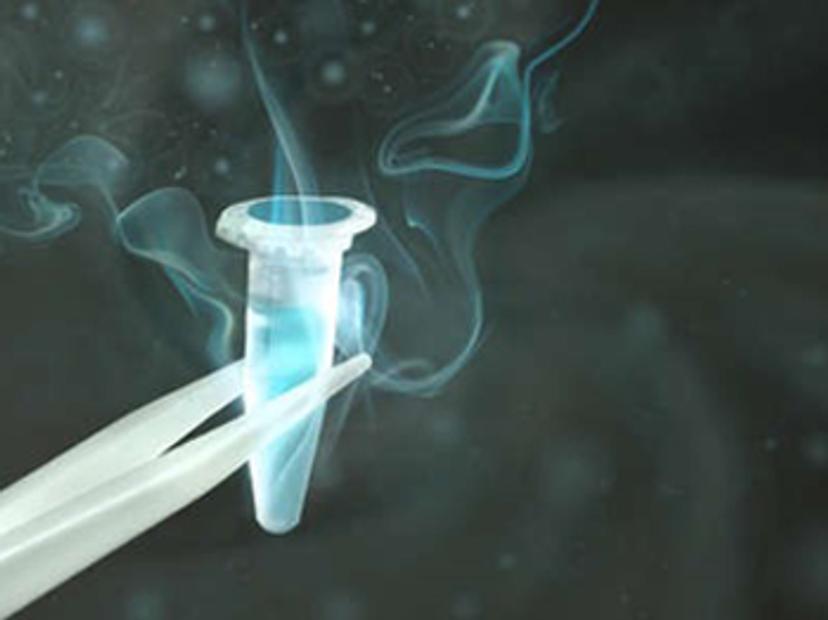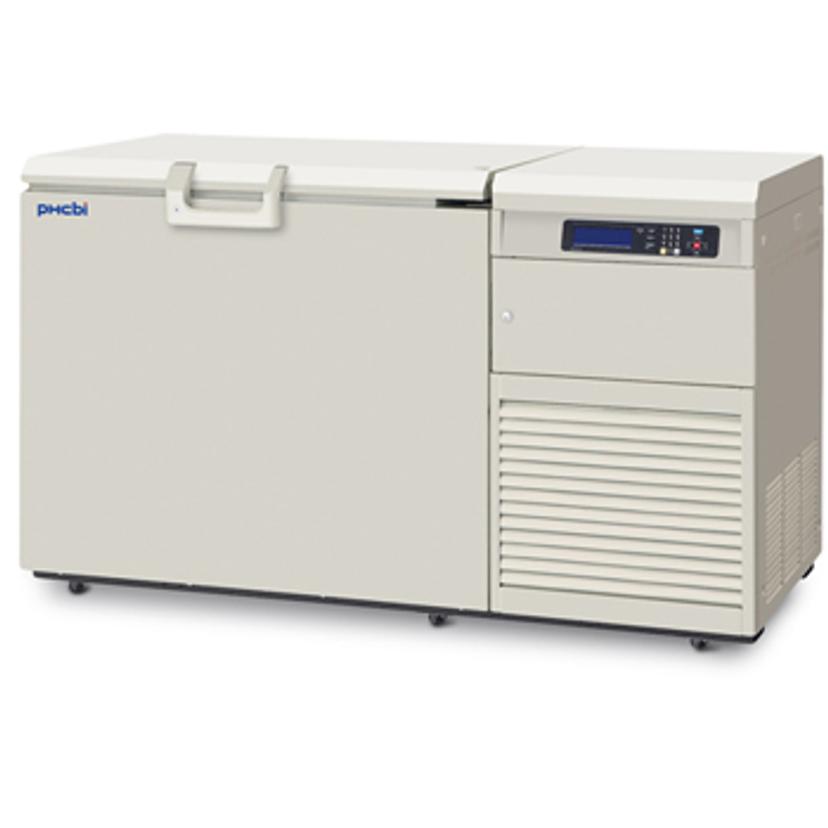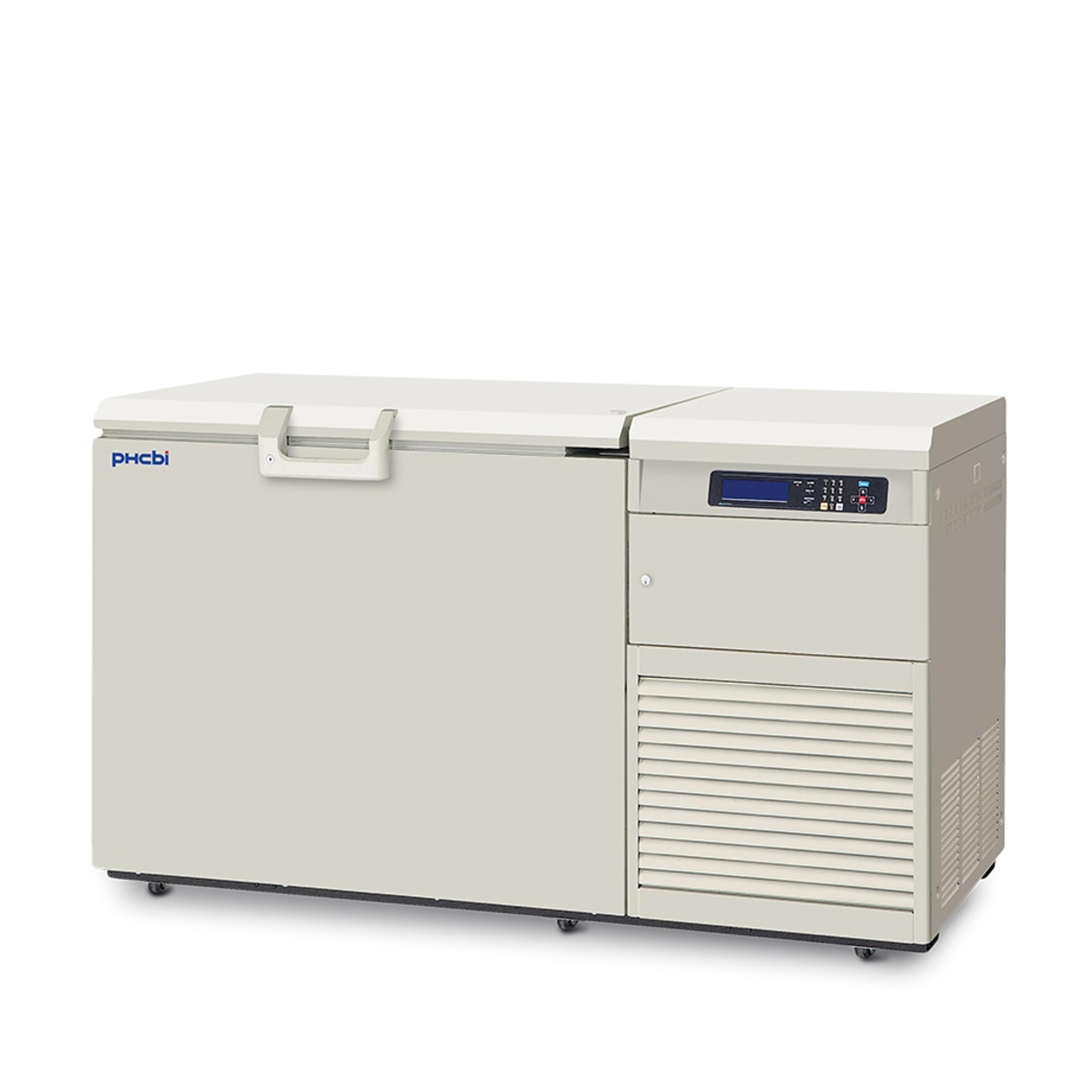Cryogenics, cancer & COVID-19: Transitioning from liquid to air phase cryogenic storage
Join a panel of scientific experts as they reveal groundbreaking COVID-19 and cancer research projects, share insights into cryogenics, and explore why we no longer need to rely on liquid nitrogen based cryogenic freezers for sample storage
17 Nov 2022

In this exclusive SelectScience® interview, we speak with a panel of scientific experts to find out how cryogenic storage is helping to advance their novel research projects and break scientific boundaries. Our panel of experts include Dr. Ronan Chaligné, Director of the Single Cell Analysis Innovation Lab at Sloan Kettering Institute, Dr. Ernesto Diaz-Flores, Associate Professor at the University of California, San Francisco (UCSF), and Dr. Anne Wyllie, Research Scientist at the Yale School of Public Health. The team will outline the key cryogenic challenges they each face, as well as sharing their hopes for the future. Plus, we will explore cryogenic technology, reveal why researchers no longer need to rely on liquid nitrogen (LN2) based cryogenic freezers, and discuss how mechanical freezers could soon provide a promising alternative.
Cryogenics is the science that deals with the production and effects of very low temperatures. The cryogenic temperature is defined from –150°C to absolute zero (–273.15°C) – the lowest limit of the thermodynamic temperature scale, whereby the motion of particles that constitute heat is minimal. As science continues to advance in all areas, so does the need for cryogenics, from operating MRI machines and cooling superconductors and rockets, to storing precious biological samples. One of the most important and widely used purposes of cryogenics is sample storage.
Sample storage at cryogenic temperatures helps to preserve biological specimens and compounds over extended periods of time. Storing samples at ultralow temperatures is necessary to extend sample viability. Interestingly, storing samples in mechanical freezers at –80°C slows down metabolic activity, while sample temperatures must be below –132°C to halt metabolic activity.
Many storage units rely on cryogenic liquids, which are gases cooled and pressurized into a liquid state, and include liquid oxygen, liquid helium, and liquid nitrogen. Liquid nitrogen is the most commonly used cryogenic liquid within the scientific industry, with a boiling point of approximately –196°C. As is the case for many freezers, specialized equipment, such as a liquid nitrogen dewar may need to be used. Fortunately, technological advances have now enabled researchers to no longer rely upon liquid nitrogen-based cryogenic freezers. Instead, researchers can opt for a mechanical freezer that offers economical air phase cryogenic storage, without the need for liquid nitrogen to function as the primary cooling medium.
Cryogenics in research: Why is it so important?

Case study 1: As science continues to advance, so does the need or cryogenic storage solutions – with freezers and refrigerators now situated within most labs across the globe. From freezing cells and tissues, to whole bodies and beyond, the need for cryogenic storage is vast.
To explore research and cryogenics further, we spoke with expert, Dr. Anne Wyllie, research scientist at the Yale School of Public Health and Principal Investigator of the SalivaDirect Initiative. Wyllie says, “Before the pandemic, my work in medical microbiology was focused on improving the detection of respiratory pathogens. Throughout my PhD, I demonstrated that sampling saliva from healthy individuals improved the detection of a clinically important bacterium, Streptococcus pneumoniae, as compared to the gold standard nasopharyngeal swab.”
During the COVID-19 pandemic, Wyllie noticed numerous challenges had arisen from people being overly reliant on nasopharyngeal swabs. During this time, she wondered whether saliva could also prove useful. “Within a few weeks, we had obtained a robust dataset showing saliva to perform, in many cases, better than the nasopharyngeal swab. We recognized early on that there would be a need for frequent and repeat testing, as communities reopened, and therefore nasopharyngeal swabs would not be ideal. A major driver in test development was to make the test as soon as possible to help as many people get tested.” Wyllie continues, “this motivation led to the development of ‘SalivaDirect™’ – an RNA-extraction free PCR test that we developed for use on numerous PCR instruments and with many different reagents that allow labs to more quickly and easily implement this into their own settings.”
The team at SalivaDirect now strive to make a significant impact on the pandemic response and public health diagnostics. “From a national regulatory perspective, we pioneered a new framework with the US Food and Drug Administration (FDA), by which our SARS-CoV-2 assay was granted Emergency Use Authorization. In turn, the FDA permitted SalivaDirect and Yale to designate high-complexity labs to use the test. We now handle all FDA compliance reporting and maintain regulatory stewardship on behalf of nearly 200 labs in our network. This centralized approach minimized regulatory barriers for labs and helped speed time to testing,” shares Wyllie.
In order to conduct this outstanding research, Wyllie requires cryogenic storage to help her achieve her research and business goals. “Storing our clinical samples at –80°C is essential to ensure our samples do not degrade over time. Each clinical sample is finite, which means that they are incredibly precious.” Cryogenic storage is therefore essential for her work. When asked about her biggest cryogenics challenge, Wyllie states, “Space! Our research space is so limited that as a freezer starts to fill up, it gets difficult trying to coordinate more space for an additional freezer, despite how necessary it is for our work.”
Combining cancer research with cryogenics

Case study 2: From COVID-19 to cancer research, Ernesto Diaz-Flores, Associate Professor at UCSF shares his unique research aims, “I am a leukemia researcher, and my ultimate goal is to find cures for high-risk pediatric leukemia through an understanding of mechanisms that mediate leukemogenesis.” During his studies, Diaz-Flores identified BCL-2 (a protein that promotes cell survival) as a crucial protein supporting hypodiploid leukemia. Hypodiploid leukemia is a leukemia subtype with multiple chromosome losses, associated with a prognosis much worse than the majority of acute lymphoblastic leukemias. “I demonstrated that BCL-2 represented a promising therapeutic target and validated Venetoclax® (a drug inactivating BCL-2) as an effective drug against this form of leukemia. This work contributed toward the first clinical trial of Venetoclax for pediatric patients.”
Throughout his pioneering work, Diaz-Flores also identified biomarkers as a response to Inotuzumab immunotherapy, another form of targeted cancer drug. “Currently, most cancers, including leukemia are treated with chemotherapy. Such agents kill all cells that multiply in the body, whether that be tumor or healthy cells, thus the high degree of toxicity of these treatments must be addressed,” explains Diaz-Flores. By understanding the mechanisms behind leukemia progression, researchers are able to better design therapies using drugs that only target cancer cells, which, in turn, maximizes the therapeutic benefits and reduces treatment toxicities. “My research is focused on finding the Achilles Heel of leukemia that would spare these healthy cells. As a translational research group, we first study leukemia cells in vitro, and we then use state-of-the-art approaches and technology, such as single cell RNA sequencing, multiparametric flow cytometry, selective gene editing and high-throughput drug screens, to study the mechanisms of the leukemic cells,” he explains.
The high-level research carried out by Diaz-Flores and his team requires the need for cryogenics. “We receive patient samples from our hospital and other institutions, including national patient sample repositories. Those cells come to us already cryopreserved. We have optimized thawing methods to ensure >90% viability upon thawing, so that we can do different studies on these cells.” Diaz-Flores and his team of expert researchers also expand the number of samples they study. One method is to further expand patient samples in mice to conduct even larger studies. “Freezing and thawing samples is a regular process in our laboratory and many other groups worldwide,” explains Diaz-Flores.
Even though cryogenics is crucial in Diaz-Flore’s lab, it does not come without its setbacks – which could have detrimental effects on his research and the lives of future cancer patients. “Cryogenic methods are still harsh if cells are not properly frozen at origin, many cells will die during freezing – and no optimal thawing protocol will be able to recover those cells. If the freezing or thawing protocol is not optimal, then a sample that contains 10M cells may only yield 1M cells. This greatly limits the studies that can be done with those samples,” shares Diaz-Flores. “Let’s say that we collect samples from ten patients at the time of diagnosis, and then another ten samples after the first and second cycle of a new therapy, making a total of thirty samples. If we lose three of the samples at diagnosis after thawing, due to massive cell death, we cannot then use the post-treatment samples from those three patients.” This means that 30% of the study would be lost. “We need to ensure that those precious samples are not lost, so that we can study every patient and generate strong conclusions about what cellular mechanisms are responsible for patient’s response to the treatment, compared to those that are in patients that were resistant to the treatment. Only then can you have statistically significant data to validate a promising experimental therapy that can be widely implemented in the clinic.”
We need to ensure that those precious samples are not lost, so that we can study every patient and generate strong conclusions.
Ernesto Diaz-Flores University of California, San Francisco
Using models and cryogenics to explore tumors

Case study 3: Dr. Ronan Chaligné, Director of the Single Cell Analysis Innovation Lab at Sloan Kettering Institute has also been working hard to advance the field of cancer therapeutics. Chaligné directs the single cell genomic core facility, where he provides clients with optimal single-cell genomic services to help them answer novel biological questions. “We implement, develop, and optimize single-cell methods to meet the needs of our collaborators. The majority of research we conduct is fundamental research, which includes clinical research on tumor samples from human patients, as well as model systems, such as mouse, organoids, and zebrafish too.”
Each model that the facility explores has its own advantages and caveats. “We are studying cancer in humans, right? So why are we using mice and zebrafish? Every model system has its own pros and cons. For example, we want to understand the human tumor, but the only caveat to that is the tumor arrives to us afterward, and we need to understand how its development started – so we have to recreate it ourselves,” shares Chaligné. “Plus, we cannot take a human being and just try to induce tumors in a person to see how the tumor was created. However, doing this in mice, zebrafish or Drosophila helps us to better understand this and potentially cure cancer a little more easily than before.” Using multiple different models to study cancer not only helps researchers to answer unanswered questions, but they can also manipulate the genes and tailor the models to meet their needs – so they can explore cancer better than ever before.
Cryogenics is essential for Chaligné to conduct this work for his collaborators. “When we do single-cell genomics, the tricky part is that we need to have a good sample, and when I say a good sample, I mean a quality sample.” The team at the Sloan Kettering Institute need quality cells to study DNA, RNA, and other fragile proteins, which can easily degrade overtime, but must remain intact when it comes to analyzing them. “The best way to preserve samples is to cryopreserve them. We take the sample and freeze it down within liquid nitrogen. When we do this, we know that RNA protein will be preserved and won't be degraded. This is ideal if we want to study the evolution of cancer in patients – to identify whether some cancers will respond to therapy or relapse over the course of many years,” shares Chaligné.
Cryogenics poses several challenges for Chaligné. “The main challenge is how we can better recover the material from the frozen sample. We are putting a lot of effort and work into being able to effectively extract the nuclei from a frozen sample. If you have liver, lung, or brain sample, each of these will require different processing methods, such as the buffer type used”. Chaligné notes that this process is also lengthy and predominantly down to trial-and-error processes.
The best way to preserve samples is to cryopreserve them.
Dr. Ronan Chaligné Sloan Kettering Institute
Meet the technology

Cryogenic storage is extremely beneficial for both commercial and research purposes, but as noted in the interviews above, the process is not without its challenges. To help combat some of these issues head-on, while also ensuring the viability of precious samples are maintained overtime, PHC Corporation of North America, manufacturers of PHCbi branded products, has developed the –150˚C Cryogenic Freezer – an economic air phase cryogenic storage unit, that has been designed to function without the requirement of liquid nitrogen. Previously, liquid nitrogen (in liquid and vapor phase) was the only method available for cryogenic storage and was considered the gold standard for cryogenic storage. While many freezers work effectively with liquid nitrogen acting as the primary cooling agent, this can also be associated with disadvantages, such as cross contamination, storage limits, vial explosion, and temperature control. Interestingly, mechanical cryogenic systems are designed to constantly remove heat to ensure tight uniformity of temperature and sample integrity are maintained. For instance, cross contamination can occur as a result of storing samples within the liquid phase, since contaminants can still move through a liquid nitrogen medium, which can also interfere with temperature.
The –150˚C Cryogenic Freezer with mechanical refrigeration uses an efficient storage medium known as “air phase”, with built-in redundancy safeguards for safe cryogenic preservation, delivering superior uniformity at cryogenic temperatures without stratification.
Delivering optimal cooling and temperature performance, the system is powered by an auto-cascade refrigeration system, which leads to faster pull-down speeds and temperature uniformity throughout the chamber, without the reliance on liquid nitrogen.
Key features:
- High-capacity storage
- Minimal footprint
- Storage of up to (165) 2" boxes or (105) 3" boxes is available – requiring 13.07 sq.ft of lab space
- Eliminates hazardous operating conditions and cost requirements associated with liquid nitrogen use
- Minimizes the possibility of cross contamination
- Energy efficient system – through balanced temperature performance and power management
- Precision temperature control – with an integrated microprocessor-based controller and LCD graphic display

